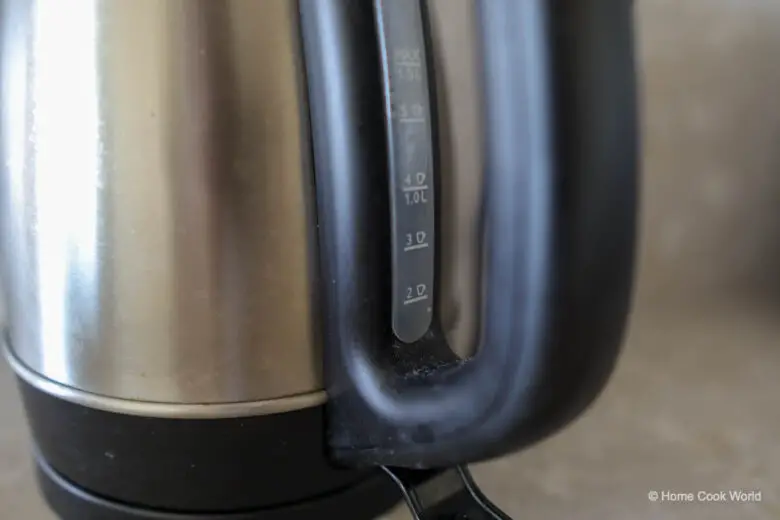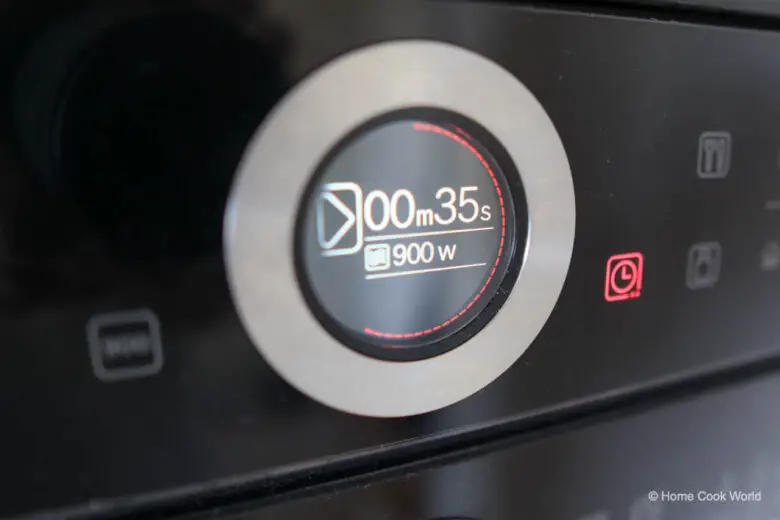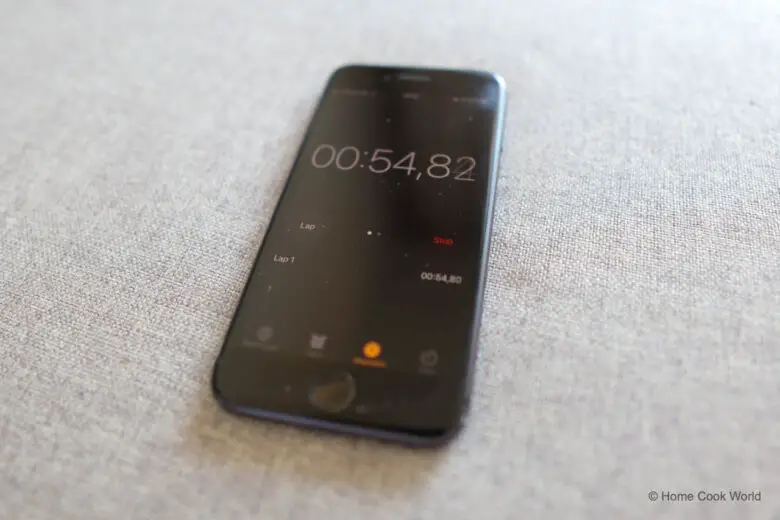A reader asked, how long does it take to boil a liter of water (in the United States and other countries that use the imperial system, 1 liter equates to 33.8 fluid ounces or 4.22 U.S. cups)?
So we set out on a series of experiments, boiling pots and bowls of water on stovetops and cookers, in kettles and microwave ovens (which we’ll tell you more about at the end of this post), to find out.
Before we get into it, though, here’s the long answer short:
It takes roughly 6-7 minutes to bring 1 liter of water on a gas or electric stove to a boil and a much shorter 2-3 minutes on an induction cooktop. An electric kettle heats the same amount of water in 2 1/2 minutes, and a microwave oven does so in 5-7 minutes.
Where you live also matters: according to instructions blog HowChimp, every 500 feet of added altitude lowers the boiling point of water by just under 1°F. Readers in Los Angeles, CA, would boil water to a boiling point of 212°F (100°C), whereas those in Boulder, CO, to 189°F (87.2°C).
The more important (and practical) factors, however, are the appliance and cookware at hand. So here’s everything we found out when it comes to bringing water to a boil on the stove, in an electric kettle, and in a microwave oven, as well as why you should trust what we have to say.
How Long It Takes Water to Boil on the Stove
There’s a simmer, the state in which bubbles are forming to various degrees in the water, then there’s a rolling boil, that moment when big bubbles start to appear, move, and burst aggressively around in the pot.
Bringing 1 liter (33.8 fluid ounces) of water to a rolling boil takes roughly 6-7 minutes on a gas or electric stove. On induction cooktops, which tend to be more powerful and efficient at transferring heat, this time is reduced down to 2 1/2 minutes.
The exact time ultimately depends on the make and model of your stove (certain stoves or cooktops are more powerful and efficient at transferring heat than others), as well as on the cooking vessel that you’re heating the water in.
Generally speaking, a higher-end, thick-bottomed stainless steel pot is better at conducting and radiating heat than a cheap and thin pot that’s not only slow and uneven to heat but also tends to warp, even when it’s only exposed to minor thermal shocks.
Some say that salted water will take longer to get up to a boil. While it’s a scientific fact that salt alters water’s properties, after conducting a round of tests, we’re convinced that you won’t notice much of a difference (if any), especially in the conditions and use cases of your kitchen.
Even when we brought a pot generously salted water for pasta to a boil (pasta water, as Italian chefs like to say, should taste like the sea), the time-to-boil wasn’t marginally longer than that of unsalted water.
“The thinner the water level,” Allrecipes‘ Kimberly Holland says, “the faster it will boil. That’s because a greater amount of surface area exposes more water to the pan’s bottom, which is the hottest part of the pan.”
How Long It Takes Water to Boil in an Electric Kettle
By far the quickest and easiest way to heat water is with an electric kettle, an essential countertop appliance for the home cook who drinks tea or instant coffee on a daily basis.
It takes an electric kettle roughly two and a half minutes to boil 1 liter (33.8 fluid ounces) of water. The exact time depends on the make and model of your electric kettle and on whether you’re trying to bring cold, lukewarm, or hot tap water to a boil.
The more powerful your electric kettle, the faster it will be capable of turning cold water into hot water. Power is measured in Watts (W), with smaller and less powerful kettles in the range of 1,500-2,200W and bigger kettles consuming as much as 3,000W of power.
A good electric kettle should be inexpensive, with simple controls that owners of all ages would describe as easy to use, and long-lasting. It should bring water to a boil quickly, without making too much noise.
We prefer stainless steel kettles. Plastic kettles impart an unpleasant chemical smell and/or taste to the water, especially when they’re used repetitively in a short period of time.
How Long It Takes Water to Boil in the Microwave
The microwave oven: it’s sure useful for defrosting chicken breasts or reheating yesterday’s leftovers. But how useful (and convenient) is it for bringing water to a boil?
It takes a 900W microwave oven roughly 5 to 7 minutes to bring a liter (33.8 fluid ounces) of water to a boil in a microwaveable plastic bowl. That time increases if you use a ceramic bowl since it stays cool for longer and delays the water from reaching its boiling point as fast.
In our tests, we found bringing water to a boil in a microwave in anything but cups highly inconvenient. Ceramic bowls were heavy to carry around, and plastic bowls had a hard time holding their shape, which almost led some of the members of our editorial team to spill water on the floor.
Why You Should Trust Us




There’s a lot of copycat content out there, and, at Home Cook World, we try to give you only tips and tricks that we’ve researched thoroughly and put to the test ourselves (even if that means we publish less content).
We conducted rigorous tests on various appliances in our editorial team’s home kitchens to give you rough estimates for how long it takes to bring 1 liter of water (33.8 fluid ounces) of water to a boil.
In our testing, we made sure to use staple appliances and cookware for a present-day American or European kitchen, including a Philips electric kettle, Bosch induction cooktop, and Bosch built-in microwave oven.
Throughout our experiments, we were aided by the timer feature on the Clock apps of our iPhones, making sure to start counting exactly when we’d turn our kettle, cooktop, or microwave oven on.

For example, we heated cold, lukewarm, and warm tap water in a 2,200-watt electric kettle, allowing the appliance enough time to cool down in-between uses, to determine the average time it took it to boil 1 liter of water.
We then brought four batches of water to a boil on an induction cooktop using an IKEA Oumbarlig stainless steel pot. For the first batch, we brought unsalted water to a boil with the lid on. For the second, we allowed the pot time to cool down, then did the same with the lid off, looking for differences. We then did the same with salted water.
Members of our editorial team then did the same on a General Electric electric range and a portable gas cooker (the kind that’s typically used for outdoor cooking under the shade of the porch in the hot days of summer).
We started the tests knowing that induction cooktops were much more efficient at transferring heat than their gas or electric counterparts, we were surprised to experience firsthand that our induction hob heated a liter of water as quickly and effortlessly as our electric kettle.
Last but not least, we tried boiling water in microwavable plastic and ceramic bowls in a built-in Bosch microwave with a power of 900 watts. We used maximum power in one-minute intervals, peaking through the glass to see when the water would boil through the entire time.
We also consulted with expert advice and opinion on selecting the best electric kettles (Wirecutter), stoves, microwave ovens, and did our due diligence on the most common myths for boiling water (Allrecipes).
While a team of researchers would probably question our tests’ un-lab-like conditions and statistical significance, we consider our findings “good enough” for a rough estimation.
Editor’s Note: An earlier version of this article gave a overly high estimate of 10 to 15 minutes for the water to reach a rolling boil on an electric or gas cooktop. Thanks to reader feedback, we re-tested our time estimate and updated it to 6 to 7 minutes.

